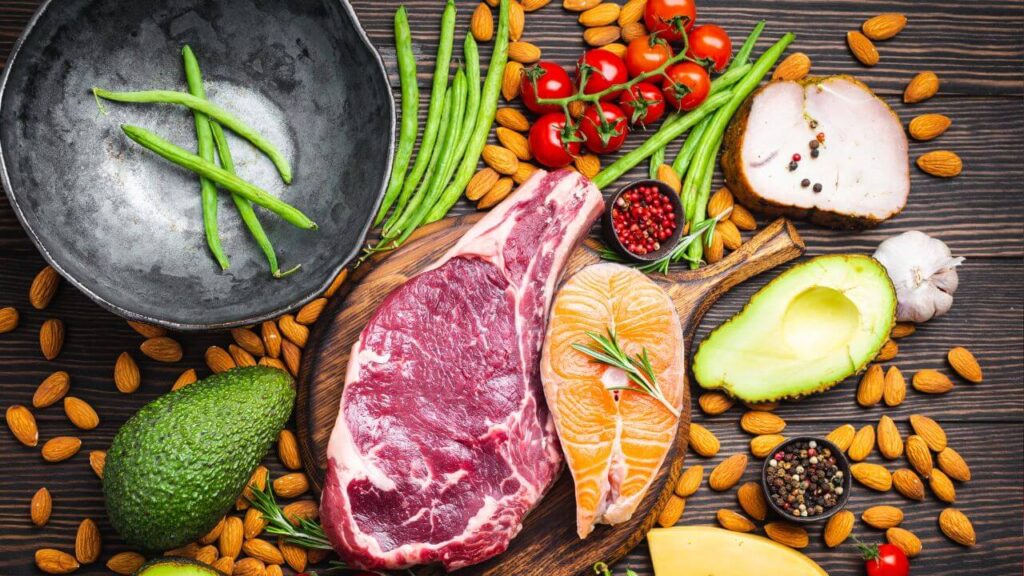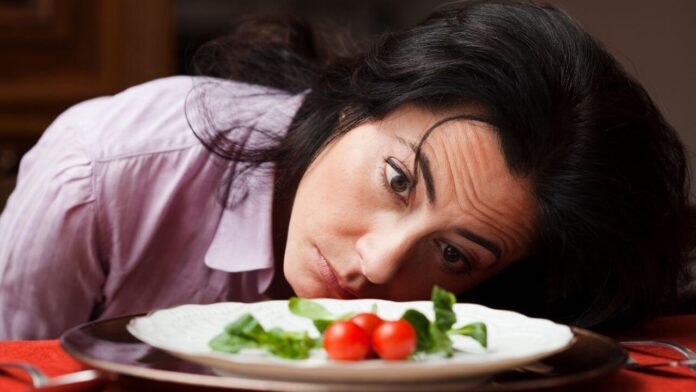Living with endometriosis is tough. Really tough. Between doctor appointments, pain management, and trying to maintain some semblance of a normal life, finding what to eat becomes yet another challenge. I’ve spent years experimenting with endometriosis diet recipes, figuring out through painful trial and error which foods help and which trigger flare-ups. About 1 in 10 women deal with this condition, so I know I’m not alone in this struggle.
I’m not going to pretend diet cured my endo – it absolutely didn’t. But changing what I eat has made a noticeable difference in my day-to-day symptoms. Some days are still rough, but they’re fewer and farther between. This guide shares what I’ve learned about the connection between food and endo symptoms, plus the recipes that have become my go-to options when pain threatens to take over.
Summary
I’ve packed this article with everything I wish someone had told me years ago about endometriosis diet recipes, including:
- Why certain foods seem to worsen or improve endo symptoms
- Foods that helped reduce my inflammation (and ones that sent me straight to the heating pad)
- 15 recipes I actually make repeatedly – for breakfast, lunch, dinner, and snacks
- How I manage meal planning without losing my mind
- Stories from other women who’ve found relief through changing their diets
- Advice from nutritionists who specialize in women’s health
Key Takeaways
- Anti-inflammatory eating isn’t just a buzzword – it genuinely helped reduce my endo pain
- Loading up on omega-3s, colorful veggies, and fiber made a noticeable difference
- Processed junk, red meat, gluten, and dairy became my personal nemeses
- Meal prepping on good days saves me on bad days when cooking is impossible
- Everyone’s triggers differ – keeping a food journal was eye-opening for me
- Food changes support medical treatment – they don’t replace proper care
The Endo-Diet Connection: It’s Complicated
When tissue similar to your uterine lining decides to grow where it shouldn’t, inflammation explodes, causing the signature pain of endometriosis. For years, I thought diet had nothing to do with my symptoms until a particularly horrible flare coincided with a week of stress-eating junk food.
I chatted with Dr. Jessica Drummond from the Integrative Women’s Health Institute, who explained it to me this way: “What you eat either throws gasoline or water on the inflammatory fire in your body. For women with endometriosis, focusing on anti-inflammatory foods often reduces pain significantly.”
My Inflammation Wake-Up Call
I realized inflammation wasn’t just a medical term – it was the raging fire causing my monthly misery. After reading a study on gratitude and pain perception, I decided to approach my diet with curiosity rather than resentment. Could changing what I ate actually help?
Foods That Became My Best Friends
Anti-inflammatory MVPs
| Food Group | My Go-Tos | Why They Helped |
| Leafy Greens | Kale in smoothies, spinach salads, collard wraps | Reduced pain intensity during periods |
| Fatty Fish | Wild salmon 2x weekly, sardines when lazy | Noticeably less inflammation after 3 weeks |
| Colorful Veggies | Red cabbage slaw, roasted bell peppers | More energy, less brain fog |
| Berries | Frozen blueberries, fresh strawberries | Satisfied sweet cravings without triggering pain |
| Healthy Fats | Avocado toast, olive oil drizzle, walnuts | Less severe cramps, better mood stability |
| Legumes | Lentil soup, quick chickpea curry | Sustained energy without digestive distress |
| Herbs & Spices | Turmeric in everything, fresh ginger tea | Reduced need for OTC pain meds |
Turmeric: The Golden Game-Changer
I was skeptical about turmeric until I ran out for a week and noticed my pain creeping back. The active compound curcumin genuinely helps reduce endo inflammation – I add it to everything from eggs to smoothies now. Pro tip from my nutritionist: always add black pepper to turmeric dishes, as it boosts absorption by up to 2000%. Who knew?
Foods That Betrayed Me
Through painful experimentation (literally), I discovered these foods consistently made my symptoms worse:
- Processed junk – particularly anything with artificial additives
- Wine and coffee – hardest things to give up, but the relief was worth it
- Gluten – took three months gluten-free to notice a difference, but it was dramatic
- Cheese – my beloved pizza became an occasional calculated risk
- Red meat – switched to small amounts of organic chicken and mostly plant proteins
- Sugar – the holiday cookie binge is never worth the January flare
Keeping a detailed food journal revealed patterns I never would have noticed otherwise – like a surprising reaction to bell peppers despite them being “healthy.”
15 Recipes That Got Me Through the Worst Days
Breakfast Lifesavers
- “I Can Actually Get Out of Bed” Golden Milk Oats
Ingredients:
- ½ cup gluten-free rolled oats
- ¾ cup unsweetened almond milk
- 1 tsp turmeric
- ¼ tsp cinnamon
- Pinch of black pepper
- 1 tbsp maple syrup
- 1 tbsp chia seeds
- 2 tbsp chopped walnuts
Instructions: Dump everything in a jar the night before (when you’re not in pain), stir haphazardly, and refrigerate. Add berries in the morning if you’re feeling fancy. Eat straight from the jar while scrolling through your phone – no judgment.
- Lazy Salmon Breakfast Bowl
I make extra salmon at dinner specifically so I can throw this together. The omega-3s help keep my pain in check, and the protein-fat combo prevents the blood sugar crashes that seem to trigger my worst flares.
- “Better Than Painkillers” Ginger Smoothie Bowl
Ingredients:
- 1 cup frozen blueberries
- 1 frozen banana
- Chunk of fresh ginger (I don’t measure, just break off what seems right)
- 1 cup unsweetened coconut milk
- 1 tbsp ground flaxseed
- Toppings: whatever’s in your pantry – I like coconut flakes and hemp seeds
Instructions: Blend everything except toppings until smooth-ish (a few chunks never killed anyone). Pour into a bowl, add toppings, eat while standing at the counter because sitting hurts.
Lunch Options for Bad Days
- Mediterranean Lentil Salad That Doesn’t Taste Like Health Food
This actually tastes good, I promise. The fiber helps with the constipation that comes with pain meds, and the olive oil contains polyphenols that seem to help my inflammation.
- “I Have a Zoom Meeting in 30 Minutes” Buddha Bowl
Ingredients:
- 1 cup chickpeas (roasted with turmeric if you have energy, straight from can if you don’t)
- 2 cups pre-washed mixed greens
- ½ cup grated carrots (buy pre-grated when flaring)
- ½ avocado
- Handful of pre-shredded red cabbage
- Sprinkle of pumpkin seeds
- Bottled tahini dressing (I make my own on good days, buy on bad days)
Instructions: Throw everything in a bowl, drizzle with dressing. Looks impressive on camera, requires minimal effort.
- Wild Salmon Wrap for When You Need to Leave the House
Using gluten-free wraps made all the difference for me. I can eat this on the go without triggering a flare, which feels like a small miracle.
Dinner Recipes That Don’t Feel Like “Special Diet” Food
- One-Pan Salmon That My Partner Also Enjoys
Ingredients:
- 4 wild salmon fillets
- 2 tbsp olive oil
- 1 tsp turmeric
- 1 tsp grated ginger
- Whatever vegetables need using up (broccoli, peppers, and zucchini work well)
- 1 red onion, cut into chunks
- Lemon slices
- Fresh herbs if you’re not too tired to chop them
Instructions: Toss vegetables with olive oil, turmeric, and ginger. Throw everything on a baking sheet. Bake at 400°F for about 15 minutes or until salmon looks done. Serve to impressed dinner guests who would never guess this is “endo food.”
- Kitchari: The “I Can Barely Move” Comfort Food
This Ayurvedic dish combines mung beans and rice with healing spices. It’s what I make during the worst flares – gentle on the stomach but still nourishing. My Indian neighbor taught me to make this when she saw me limping to get the mail.
- “Looks Fancy But Takes 20 Minutes” Stuffed Peppers
Ingredients:
- 4 bell peppers, tops cut off, seeds removed
- 1 cup pre-cooked quinoa (I always have some in the fridge)
- 1 can chickpeas, drained
- 1 zucchini, diced
- ½ cup cherry tomatoes, halved
- ¼ cup olives
- 2 tbsp olive oil
- 1 tsp oregano
- Handful of fresh parsley
- Goat cheese if your body tolerates it (mine doesn’t anymore)
Instructions: Mix everything except the peppers. Stuff the mixture into peppers. Bake at 375°F for 30-35 minutes until peppers soften. Take a picture for Instagram because they look impressive despite minimal effort.
Snacks That Don’t Trigger Flares
- No-Bake Energy Balls That Don’t Taste “Healthy”
These are my emergency food for bad pain days. They don’t spike my blood sugar, and the anti-inflammatory spices actually seem to help. I keep a batch in the freezer at all times.
- “I’m Still a Person Who Enjoys Food” Hummus
Ingredients:
- 1 can chickpeas, drained
- ½ avocado
- 2 tbsp olive oil
- 1 cup roasted vegetables (whatever’s left in the fridge)
- 1 garlic clove
- Juice of ½ lemon
- ¼ tsp cumin
- Sea salt to taste
Instructions: Throw everything in food processor. Blend until smooth-ish. Dip vegetables or gluten-free crackers when hungry.
- Overnight Chia Pudding That Doesn’t Look Like Frog Eggs
This is my favorite make-ahead snack. The omega-3s in chia seeds help fight inflammation, and the blueberries add antioxidants without triggering my symptoms.
Drinks That Actually Help
- “Better Than Starbucks” Turmeric Latte
Ingredients:
- 1 cup unsweetened almond milk
- 1 tsp turmeric
- ½ tsp cinnamon
- ¼ tsp ginger
- Pinch of black pepper
- 1 tsp maple syrup (optional but recommended)
Instructions: Heat everything in a small saucepan. Blend with immersion blender if you want it frothy. Pour into favorite mug and pretend you’re at an overpriced café.
- “My Insides Are Angry” Ginger-Mint Tea
This combo saved me during countless flares. Peppermint has been shown to relax smooth muscle tissue, which helps with the cramping. I grow mint on my windowsill for emergency access.
- “When I Need Nutrients But Can’t Eat” Green Smoothie
Ingredients:
- 1 cup mixed berries (frozen is fine)
- Handful of spinach (you won’t taste it, I promise)
- 1 tbsp ground flaxseed
- 1 cup unsweetened almond milk
- ½ frozen banana
- Chunk of ginger root
- Ice if needed
Instructions: Blend until smooth. Drink slowly. Sometimes this is all I can manage during the worst days, but it provides nutrients without triggering more pain.
How I Plan Meals Around Unpredictable Symptoms
Creating a sustainable approach to endometriosis diet recipes required planning – something I resisted until I realized how much it helped during flares.

My Sunday Survival Strategy
- Prep Day: I roast a big batch of vegetables, cook quinoa or rice, and prepare simple proteins when I’m feeling good
- Base Camp: I make versatile foundations like cauliflower rice or zucchini noodles that work with multiple meals
- Sauce Stash: I blend anti-inflammatory dressings and sauces to add flavor without triggering ingredients
- Veggie Prep: I chop vegetables for quick assembly throughout the week (or my partner can help when I’m in pain)
My Actual 3-Day Meal Plan
| Meal | Good Pain Day | Medium Pain Day | Bad Pain Day |
| Breakfast | Golden Milk Oats | Pre-made Smoothie Bowl | Ginger Tea + Toast |
| Lunch | Mediterranean Salad | Buddha Bowl from Leftovers | Heated Soup from Freezer |
| Snack | Energy Balls | Hummus + Crackers | Banana with Nut Butter |
| Dinner | Turmeric Salmon | Leftover Salmon + Quick Veg | Frozen Kitchari Portion |
| Evening | Turmeric Latte | Ginger Tea | More Ginger Tea |
Real Stories: Women Who Found Relief
While everyone’s experience is different, hearing others’ stories helped me feel less alone. Sarah, a 34-year-old teacher, told me: “After six months of following anti-inflammatory eating, my pain went from constant 8/10 to occasional 3/10 flares. I can actually plan things now without constantly canceling.”
My friend Melissa was even more skeptical than I was about diet making a difference. After eliminating processed foods and focusing on anti-inflammatory endometriosis diet recipes, she experienced two nearly pain-free periods for the first time in years. “I thought diet changes were woo-woo nonsense,” she admitted, “but I was desperate, and now I’m a believer.”
Beyond What’s on Your Plate
While changing my diet made a significant difference, I found several other approaches that complemented the endometriosis diet recipes:
- Stress management: My flares get dramatically worse during stress, so I prioritize simple meditation
- Gentle movement: Walking and swimming seem to help, while high-intensity exercise makes things worse for me
- Consistent sleep: When I skimp on sleep, my inflammation and pain tolerance both suffer
- Acupuncture: Monthly sessions have reduced my need for pain medication
- Reducing toxins: Switching to natural cleaning products lessened my symptoms (surprisingly)
Working With Healthcare Providers Who Actually Listen
Diet should complement, not replace, proper medical care for endometriosis. Finding a doctor who didn’t dismiss my dietary observations took time. Lisa Meier, a dietitian specializing in women’s health, gave me advice I wish I’d heard years ago: “Share your dietary approach with your healthcare team. An integrative approach combining medical treatments with supportive lifestyle practices, including endometriosis diet recipes, usually works best.”
Many women find relief through practitioners who understand the endo-diet connection – I finally found a doctor who didn’t roll her eyes when I mentioned food triggers.
My Ongoing Endo Journey
The most important lesson I’ve learned is patience. Dietary changes took nearly three months to show significant effects for me. The improvement wasn’t overnight, but rather a gradual lessening of symptoms that I only fully appreciated when looking back at my symptom journal.
What works for me might not work for you – we’re all different. Use these endometriosis diet recipes as a starting point, then pay attention to your body’s responses and adjust accordingly.
Finding Your Own Path to Better Days
Living with endometriosis requires resilience and self-advocacy. By experimenting with healing recipes, you’re taking control of an aspect of your condition that doctors rarely address adequately. While diet alone won’t cure endometriosis (and anyone who claims it will is selling something), thoughtful nutrition might improve your quality of life and symptom management.
As research into the endometriosis-diet connection continues to evolve, stay connected with communities of other endo warriors. Your journey with endometriosis diet recipes isn’t just about restriction – it’s about discovering nourishing options that help your body function better despite this challenging condition.
My Endo Kitchen Essentials
After years of trial and error, these are the tools that make maintaining my endometriosis diet recipes possible:
- A decent blender for smoothies (doesn’t have to be fancy)
- An Instant Pot for cooking beans and grains when standing hurts
- Glass containers for prepped meals (plastic can contain endocrine disruptors)
- One good chef’s knife that makes chopping less painful
- A basic spice grinder for fresh turmeric and ginger
These simple tools, plus a willingness to experiment, have made managing my symptoms through diet so much more doable. When people ask how I “stay so disciplined” with my diet, I just laugh – when the alternative is debilitating pain, choosing anti-inflammatory foods becomes much easier.




